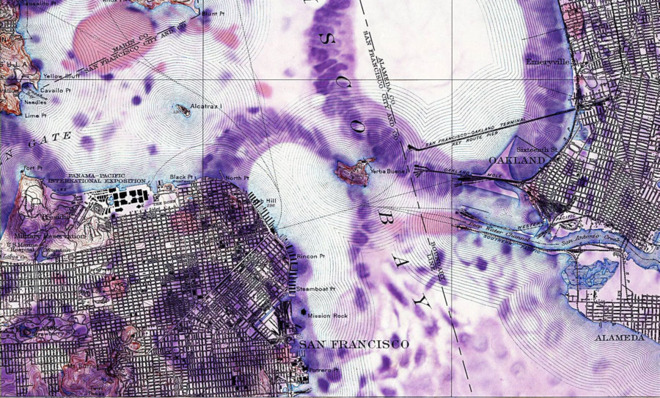Can science fiction spur scientific innovation?
If we want to do big things, then we need to rev up our imaginations


Does science fiction help us innovate? According to Arizona State University's strange and strangely compelling Center for Science and the Imagination, the answer is, absolutely yes. The Center (yes, it's abbreviated CSI) has joint projects with organizations like IBM and the World Bank, and it was founded on the premise that imagination is an essential component of our society's greatest scientific and technological accomplishments. If we want to do big things, then we need to rev up our imaginations — with science fiction.
A perceived lack of imagination in our society prompted the creation of CSI's flagship venture, Project Hieroglyph, which consists of a recently released science fiction anthology called Hieroglyph and an online community. In a preface to the anthology titled "Innovation Starvation," science fiction author Neal Stephenson, one of the project's originators, explains the problem. The scientists and engineers of earlier generations had the ambition to "build things that would solve age-old problems, transform the landscape, build the economy, and provide jobs for the burgeoning middle class." The zenith of this heroic age of science and technology was the Apollo program. In the 1960s we put men on the moon, but now we don't even have a single Space Shuttle. "I worry," Stephenson writes, "that our inability to match the achievements of the 1960s space program might be symptomatic of a general failure of our society to get big things done."
Why are we failing? Hieroglyph's editors, Ed Finn and Kathryn Cramer, argue that part of the problem has to do with storytelling. Grand projects like the Great Pyramids, the Hoover Dam, or a moon landing were preceded by stories. "Someone had to imagine them and create a narrative that brought that vision to life for others." Or as Neal Stephenson puts it, science fiction "supplies a plausible, fully thought-out picture of an alternate reality in which some sort of compelling innovation has taken place," producing icons that serve as "hieroglyphs — simple, recognizable symbols on which everyone agrees." Science fiction is a way to craft big, compelling visions that will get people working on building the future.
The Week
Escape your echo chamber. Get the facts behind the news, plus analysis from multiple perspectives.

Sign up for The Week's Free Newsletters
From our morning news briefing to a weekly Good News Newsletter, get the best of The Week delivered directly to your inbox.
From our morning news briefing to a weekly Good News Newsletter, get the best of The Week delivered directly to your inbox.
The anthology features stories that are thought experiments on technology that might really exist some day. In his story, Stephenson explores what it would take to construct the tallest tower we could possibly build. Other stories explore the possibilities of gene therapy for dyslexia, social engineering to secure the U.S.-Mexican border, carbon-neutral cities, hormone regulators, flying suits, drones, and radically new social networking tools. All great stuff, both thought-provoking and fun — but how much of an impact does science fiction really have on science and technology?
THERE ARE CLASSIC EXAMPLES of science fiction authors successfully anticipating some game-changing technology. Rockets for space travel were popular in fiction for decades before they became reality. In 1945 Arthur C. Clarke published the idea of a geosynchronous communications satellite, 20 years before the first one was launched. In 1982, William Gibson envisioned a world dominated by a computer network, which he named "cyberspace." Thirty years before the Manhattan Project, H.G. Wells wrote The World Set Free, a novel about atomic energy and nuclear war. Wells was an associate of the physicist Leo Szilard, who read Wells' book and came up with the idea of a nuclear chain reaction, leading directly to the first nuclear reactors and weapons.
But the story of Leo Szilard and H.G. Wells shows how difficult it is to make a credible claim that science fiction has changed science. Szilard said that Wells' book "didn't start me thinking of whether or not such things [as nuclear energy] could in fact happen." A more direct influence on Szilard was the discovery of the neutron in 1932, which was the key to creating a nuclear chain reaction. H.G. Wells himself was influenced by the writings of contemporary physicists whose calculations showed that tremendous amounts of energy were bound up in very small amounts of matter. But if Szilard's physics wasn't a direct consequence of science fiction, his big vision certainly was: In the year of his discovery, Szilard told a friend that some day we would need to leave the solar system to save ourselves, and that we couldn't do that without nuclear energy.
A bigger problem with the idea that science fiction inspires science is that the themes explored by science fiction authors are extremely selective. Writers generally go for trendy topics that make good stories. The technologically optimistic Golden Age science fiction that Project Hieroglyph invokes as a paradigm was overwhelmingly focused on technology related to the headline topics of space colonization, weaponry, and robots. Many of the most significant 20th-century scientific developments were absent from this fiction: contemporary discoveries in genetics, molecular biology, neuroscience, economics, and operations research were hardly ever explored, but those discoveries have all changed our society more profoundly than the space program. The possibilities of future computers are a big theme in science fiction today, but not when the foundations of modern computing were established in the 1940s and '50s. Much of the most cutting-edge science happens without anyone writing visionary stories about it.
A free daily email with the biggest news stories of the day – and the best features from TheWeek.com
That's OK. Scientists and engineers have plenty of imagination. What they don't always have are the incentives and support to take big intellectual risks. Making the case that we should tackle big ideas that might fail is Project Hieroglyph's most valuable contribution. Neal Stephenson writes that "the vast and radical innovations of the mid-twentieth century took place in a world that, in retrospect, looks insanely dangerous and unstable." Pursuing insanely dangerous ideas — like nuclear weapons — is probably not the best way to build a better society. But risking failure is critical in science and technology. Unfortunately, failure is expensive, and the lack of money is probably the best explanation for why our society isn't "executing the big stuff" that Stephenson wants to see. Scientists facing increasingly poor career prospects become risk-averse. Venture capitalists who complain that they only have 140 characters instead of flying cars are nevertheless hesitant to fund the expensive and risky development of technology that could be genuinely transformative. We certainly need imagination in science, and we should tell inspiring stories about big ideas. But to realize those ideas, we have to pay for them.
Pacific Standard grapples with the nation's biggest issues by illuminating why we do what we do. For more on the science of society, sign up for its weekly email update or subscribe to its bimonthly print magazine.
More from Pacific Standard...
-
 Climate change could lead to a reptile ‘sexpocalypse’
Climate change could lead to a reptile ‘sexpocalypse’Under the radar The gender gap has hit the animal kingdom
-
 7 hotels known for impeccable service
7 hotels known for impeccable serviceThe Week Recommends Your wish is their command
-
 6 inviting homes with event spaces
6 inviting homes with event spacesFeature Featuring a Vermont compound with an airstrip and Virginia farm with a party barn